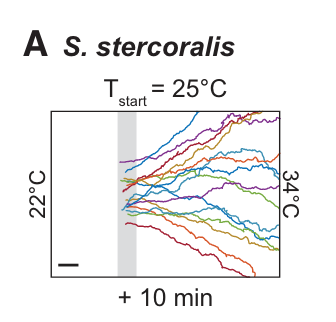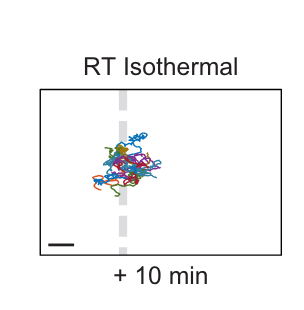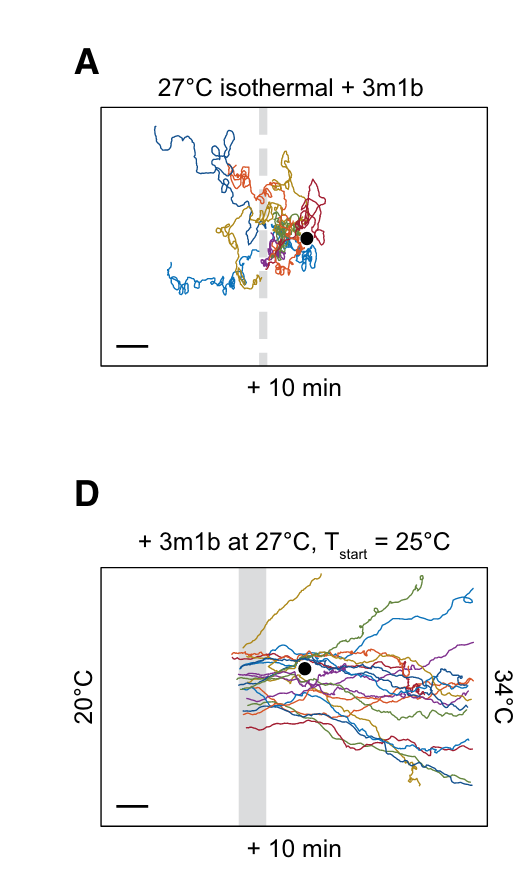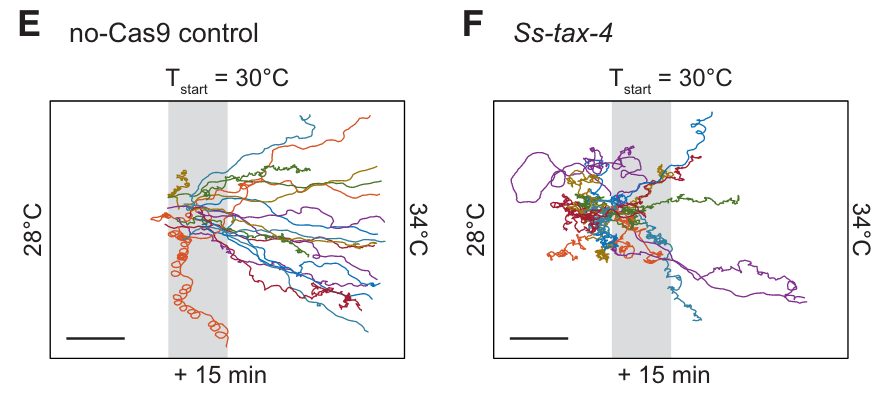A Critical Role for Thermosensation in Host Seeking by Skin-Penetrating Nematodes
authors: Astra S. Bryant, Felicitas Ruiz, Spencer S. Gang, Michelle L. Castelletto, Jacqueline B. Lopez, Elissa A. Hallem
doi: 10.1016/j.cub.2018.05.063
CITATION
Bryant, A. S., Ruiz, F., Gang, S. S., Castelletto, M. L., Lopez, J. B., & Hallem, E. A. (2018). A Critical Role for Thermosensation in Host Seeking by Skin-Penetrating Nematodes. Current Biology, 28(14), 2338-2347.e6. https://doi.org/10.1016/j.cub.2018.05.063
ABSTRACT
fleeting notes
-
life cycle includes infective larval stage called iL3
- this is the life stage where host seeking occurs
-
iL3s respond strongly to temperature - and show positive and negative thermotaxis
- the switch between these is dictated by cultured temperature
-
parasites show thermal plasticity like c elegans
-
parasitic host seeking is generated through adaptation of sensory cascade network
-
motivation for studying parasitic nematodes
- chronic infections primarily affect communities of poverty
- current treatments are insufficient - research may lead to better strategies
- better understand evolutionary mechanisms
- current treatment includes periodic deworming, but livestock and people develop drug resistance
-
the infective larval stage (iL3) is analogous to c elegans dauer stage
- iL3s dont eat??
-
nematode thermosensation
- worms have experience dependent plasticity for temperature navigation
- at noxious temperatures above cultured temperature, worms travel down the thermal gradient
-
parasite heat seeking
-
when placed at room temp, iL3s move toward warmth
-
iL3s prefer roughly core body temperature (~38-40 C)
-
speed of migration depends on strength of thermal drive (or steepness of thermal gradient?)
-
parasites engage in different migratory behaviors depending on sensory information
-
local search behavior - defined by circular travel trajectory
- inhibited by stronger thermal drive
- allows worms to sample other sensory information when close to the host
-
negative thermotaxis
- when placed below ambient temperature
- might act as a dispersal mechanism
- depends on experience dependent plasticity of cultured temperature
-
timecourse of how long it takes the cultured temperature to determine thermotaxis behavior is relatively quick (can see changes in behavior after 2 hours) but positive thermotaxis still remains even if cultured at close to body temperature
- suggests diurnal changes in host seeking
-
-
parasite chemosensation
-
molecular basis of thermosensation
is host temperature (or maybe positive thermotaxis?) rewarding for iL3s or is it hardwired into the circuit to navigate toward host temperature? It seems like there is some sort of cost benefit analysis / neural computation to decide to go towards warmer temperatures, since placing worms at colder than ambient temps drives negative thermotaxis and maybe this isnt worth the energy to host seek?




